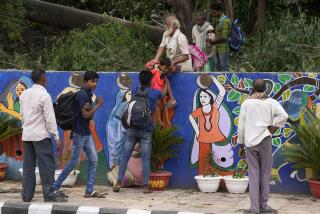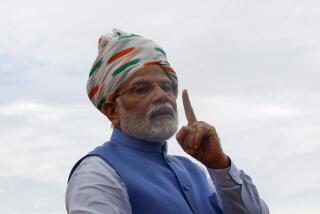For many in India, the biggest concern isn’t coronavirus. It’s hunger
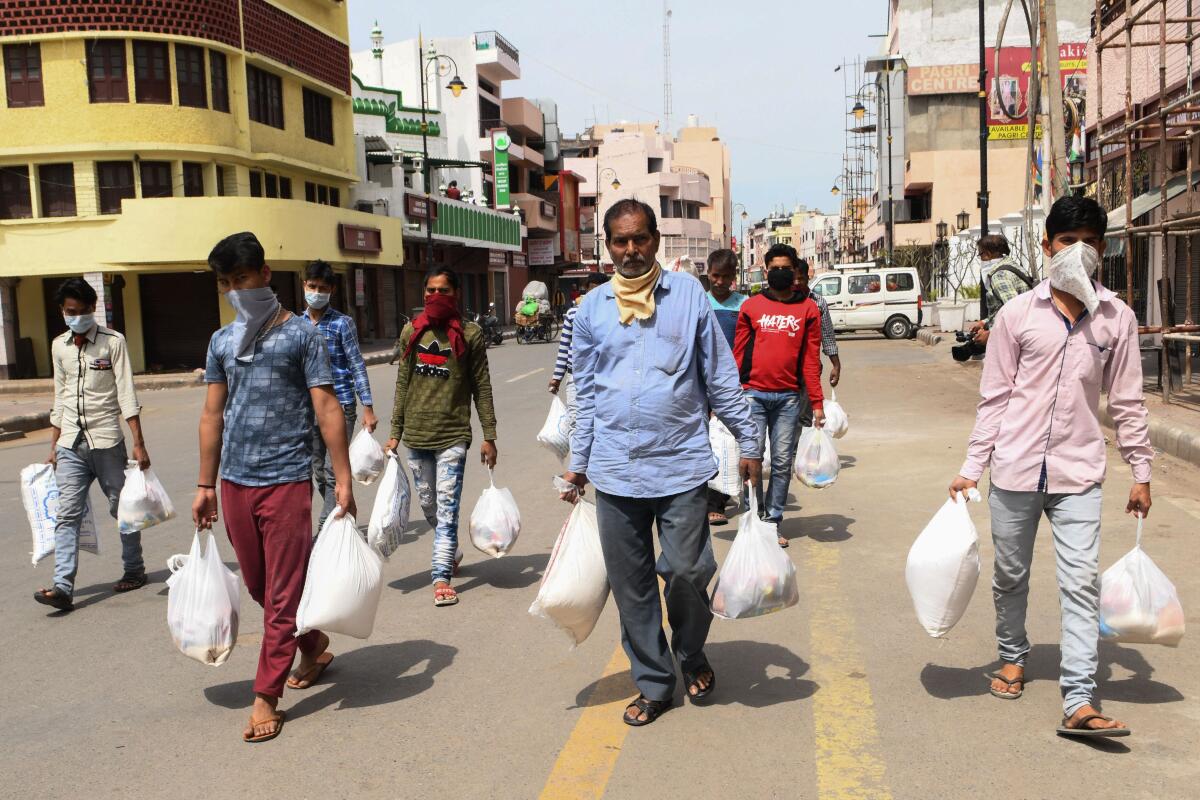
- Share via
MUMBAI, India — The biggest lockdown in human history — 1.3 billion Indians ordered to stay home to curb the spread of the coronavirus — has unleashed chaos across the country as stranded migrant workers sleep in city streets, police beat curfew-breakers, fruits and vegetables rot in markets and masses of informal laborers find their livelihoods wiped out.
The first two days of the lockdown imposed by Prime Minister Narendra Modi have thrown the lives of some of India’s poorest people into disarray. A total shutdown of trains and buses has prevented countless migrant workers from returning to their villages, forcing them into makeshift shelters or open fields where they are subsisting on food handouts, and hand-washing and social distancing are impossible.
“This is a complete catastrophe,” said Ranu Bhogal, who is policy, research and campaigns director for Oxfam India.
For many Indians, contracting the coronavirus — in a country with a vastly underequipped health sector even in normal times — is suddenly a less urgent concern than finding their next meal.
It is a startling moment, the latest dangerous chapter in the pandemic. Modi enacted the three-week lockdown Tuesday with just four hours’ notice, leaving no time for millions of construction workers, street vendors, cleaners and others — who earn daily or weekly wages in a vast informal economy — to secure salaries or reach their homes.
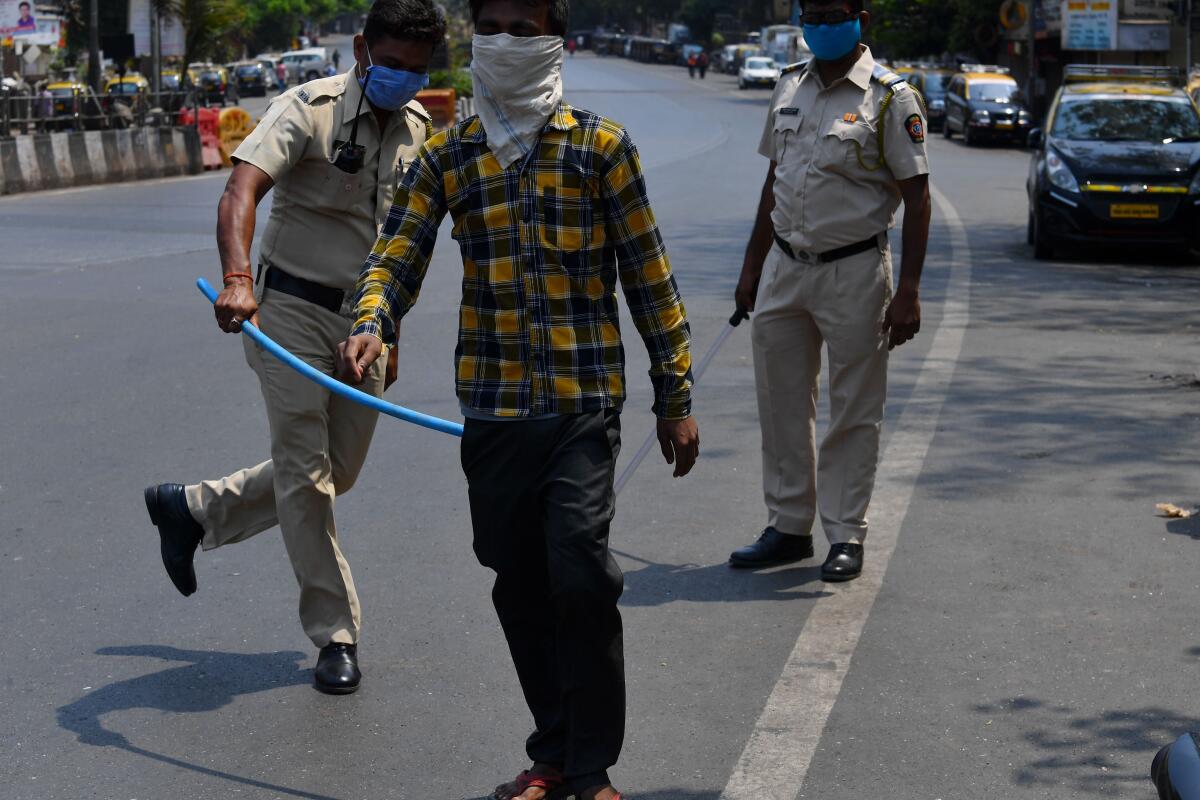
Some migrant workers, wearing masks and backpacks, were trying to walk hundreds of miles to their villages, defying the stay-at-home orders and risking beatings by police. In Mumbai, India’s financial capital, scores have been sleeping in the open near a train station after local leaders banned interstate travel last week.
Many wander the surrounding area during the day, looking for food or an open grocery store to charge their phones, and using a public toilet to keep clean. Others doze under trees, their heads resting on their bags as they wait for food handouts.
“What should I do?” Ruhul Amin, a 28-year-old construction worker from West Bengal state, said when asked about contracting the virus. “I know I’m coming in contact with others, I know I am at risk. But this is about survival.”
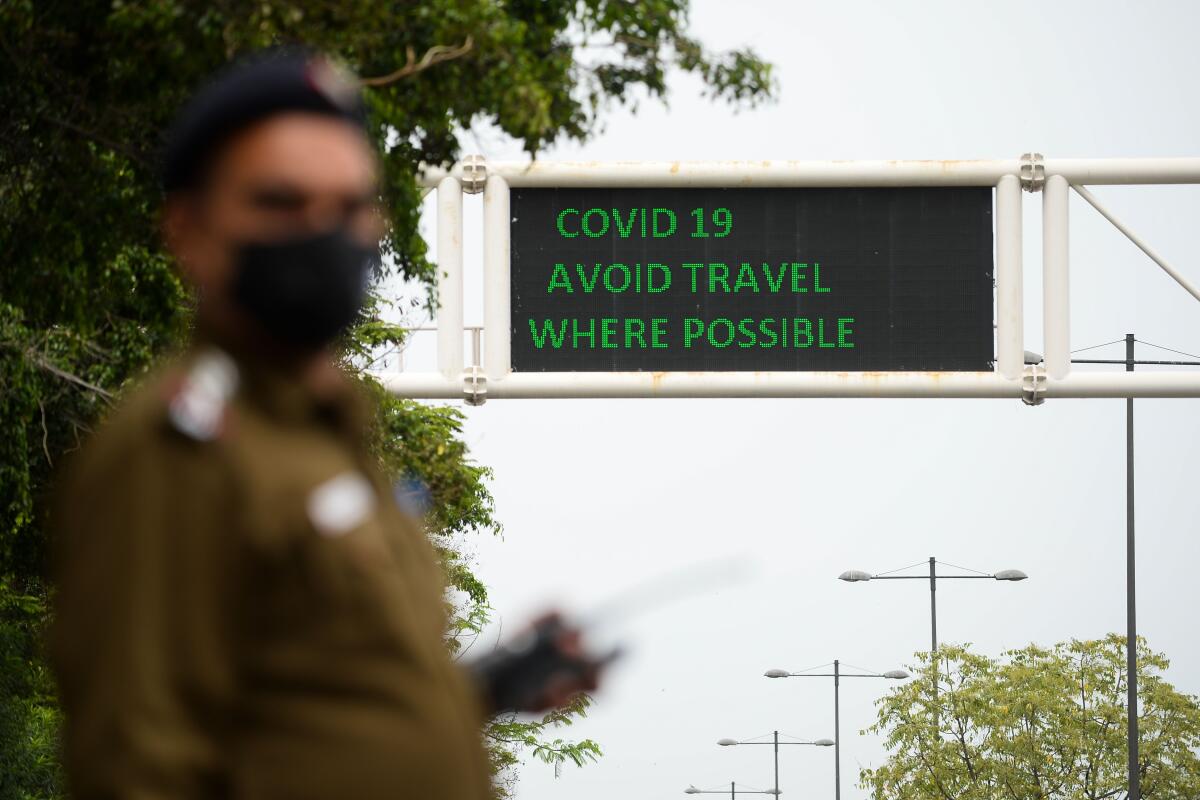
Amin said police have been unsympathetic, beating up those who ask for help. Authorities have set up WhatsApp hotlines for migrant workers to seek assistance, but Amin doesn’t have a smartphone.
“We can’t sleep under the open sky for 21 days,” he said. “There are hundreds of us, and it is impossible to follow social distancing.”
In New Delhi, thousands of stranded workers were crowding into shelters or gathering in public spaces where the municipal government or aid groups were serving plates of rice and dal from giant barrels. Saba Bhat, who works with a nongovernmental organization, said the group’s 20-room shelter was filled with workers, some of whom had been evacuated from railway stations and mosques.
“We are running short of resources,” she said. “I have gotten about 4,000 calls.”
The plight of migrant workers reflects the challenges India faces in imposing the type of lockdowns implemented in parts of the U.S. and Europe, which in some areas have been credited with slowing the transmission of COVID-19.
About 80% of India’s 471-million-strong labor force works in what is broadly known as the informal sector, meaning they lack contracts, social security and other benefits, and are not covered by labor laws. None can work from home, and if travel and nonessential businesses are shut down, they lose any hope of earning a living.
Also challenging for India is its density: With millions of people packed into slums and tenements, clusters of infections are popping up in crowded urban areas. The country has recorded slightly more than 700 COVID-19 infections but conducted only about 22,000 tests as of Tuesday, one of the lowest rates in the world.
The World Health Organization has endorsed India’s lockdown but said it needed to be accompanied by expanded testing, increased supplies of frontline medical equipment and improved tracing and quarantining of infected people and their contacts.
India missed the opportunity to screen migrant workers at train stations this month as huge numbers began returning to their villages by the railway system, the world’s busiest. In some northern villages, residents have reportedly blocked returnees, fearing they could be carrying the virus.
“We should have anticipated these things,” Bhogal said. “In terms of preparing people for the lockdown, there was zero preparation, and that has caused havoc in the country.”
Modi’s government has assured Indians that food and other essentials would remain available during the lockdown, which also bans religious gatherings and groups of five or more.
But in some cities, residents captured videos of police officers beating people who ventured outside to buy food. In others, produce markets were jammed with crowds, making a mockery of social distancing.
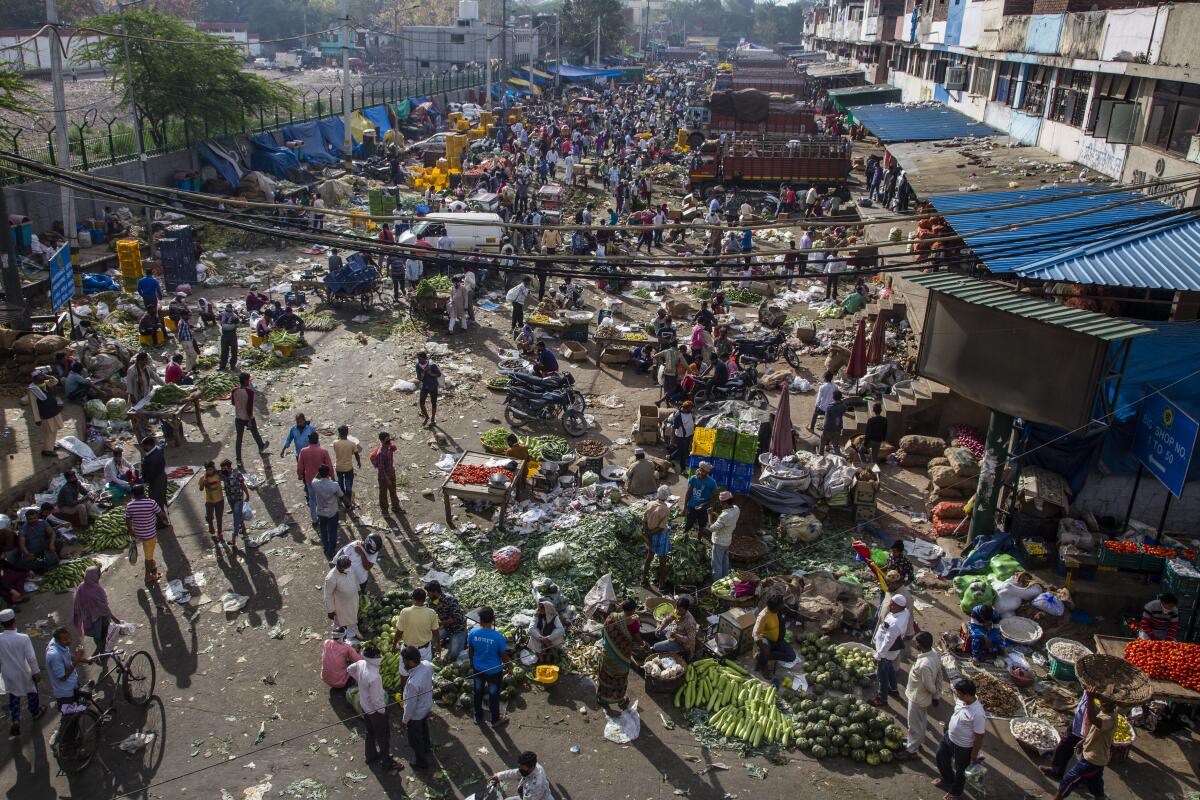
Advocacy groups said that hunger among India’s lowest classes would make them more susceptible to diseases such as COVID-19.
Rajib Dasgupta, an epidemiologist and professor at New Delhi’s Jawaharlal Nehru University, said initial reports indicated the lockdown had created “immense hardship for millions of Indians.”
“It’s possible that a lockdown at this stage would have some beneficial effect, but the challenge is, how long can India sustain its lockdown given the enormous humanitarian issues it comes with?” he said.
Modi’s government on Thursday announced a$22-billion relief package including cash handouts and other benefits for low-income Indians. But experts were skeptical that it would help stranded workers, many of whom might lack documents proving their eligibility.
“Those who live from week to week, they are now the hardest hit,” said Dola Mohapatra, executive director of Rise Against Hunger India, a Bangalore-based charity. “The only way out for them is to get back to some economic activity. During a crisis, if people don’t have resilience, they will fall back into poverty, and we are on the brink of that.”
The latest updates from our reporters in California and around the world
Even before the coronavirus crisis, India was facing an economic crunch marked by rising unemployment and declining growth. New Delhi and other cities have also been gripped by protests against a citizenship law that have resulted in widespread damage and dozens of deaths.
Mohapatra spent much of Thursday on the phone with half a dozen partner agencies that were distributing food in Mumbai, New Delhi and other cities. The mobile networks were overloaded as people searched for information about the lockdown, so it was often hard to hear people onthe other end of the line. But all shared the same stories from speaking with stranded migrants, Mohapatra said.
“The common thread from all of them,” he said, “is that people are less worried about corona and more worried about the immediate looming hunger.”
Special correspondent Parth M.N. reported from Mumbai and Times staff writer Bengali from Singapore.
More to Read
Sign up for Essential California
The most important California stories and recommendations in your inbox every morning.
You may occasionally receive promotional content from the Los Angeles Times.
